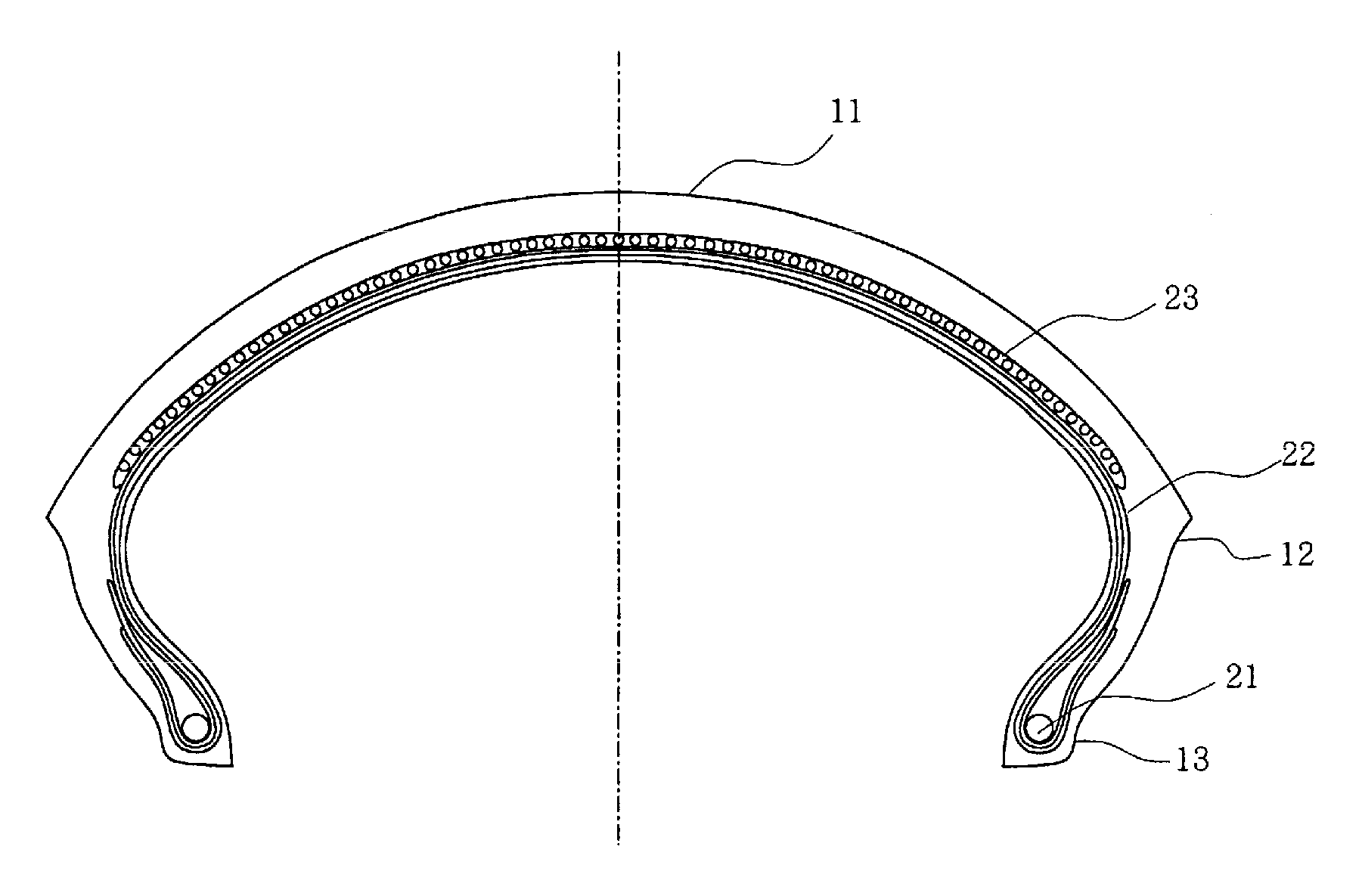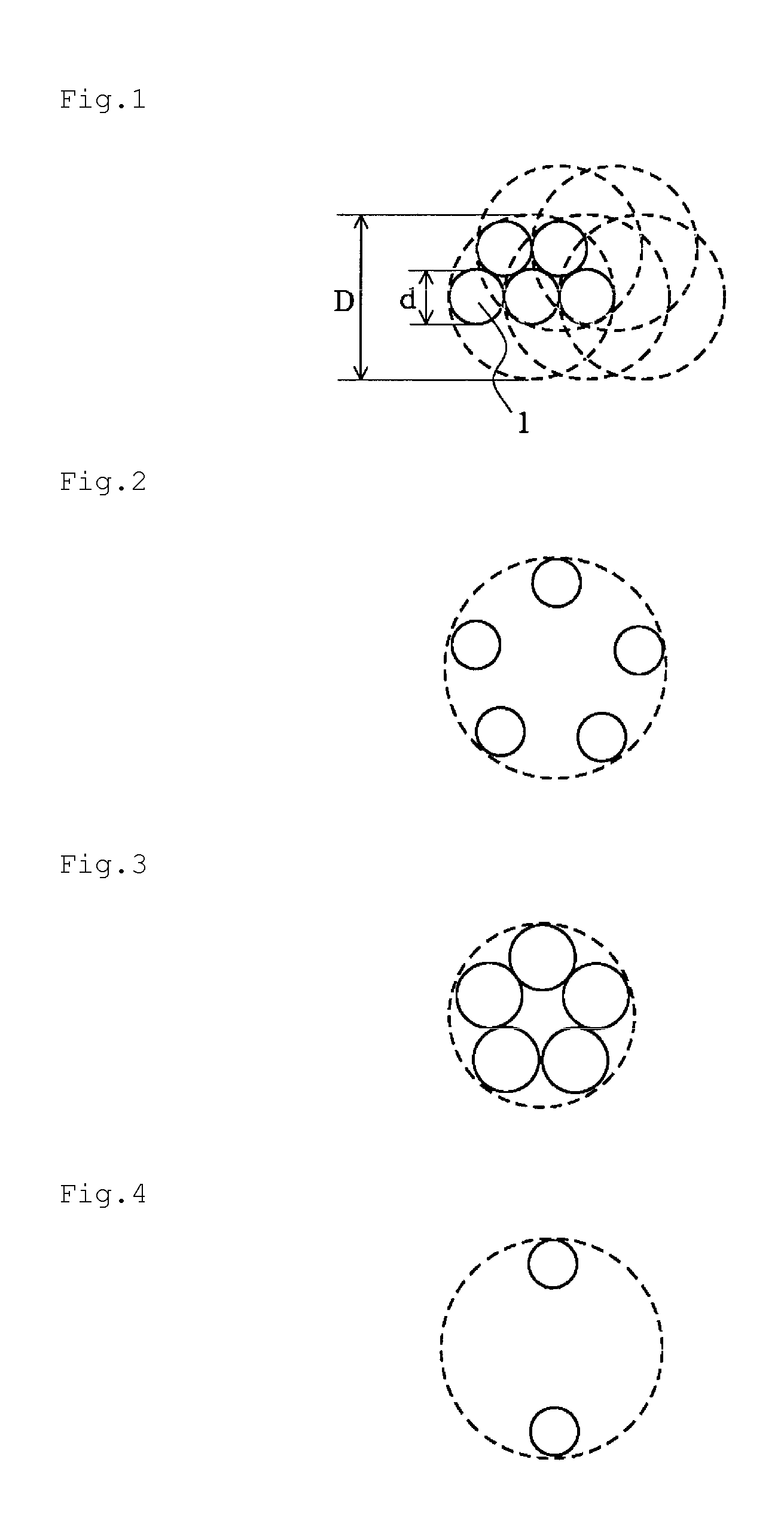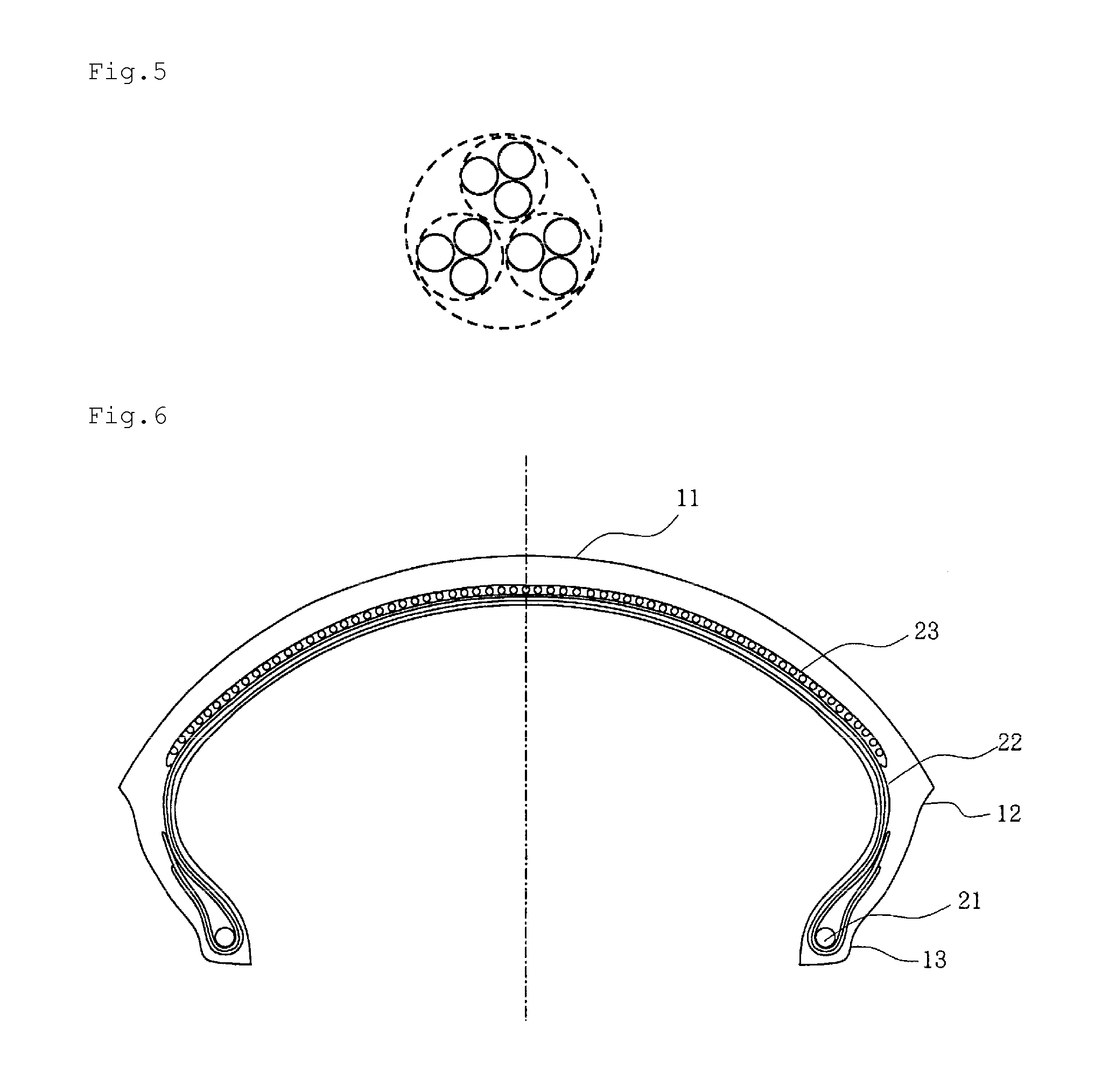Rubber-steel cord composite and tire using the same
a technology of rubber-steel cord and composite material, which is applied in the direction of heavy-duty tyres, transportation and packaging, cycles, etc., can solve the problems of insufficient strength and inability to improve above two types of properties at the same time, and insufficient rigidity of rubber itself. , to achieve the effect of low rigidity, high rigidity, and flexible properties
- Summary
- Abstract
- Description
- Claims
- Application Information
AI Technical Summary
Benefits of technology
Problems solved by technology
Method used
Image
Examples
example 1
[0098]By using steel linear objects (filaments or strands (brass plating): 63 percent by weight of Cu and 37 percent by weight of Zn) subjected to shape forming, which had shape forming amounts and pitches shown in the following Table 1, rubber-steel cord composites were formed in accordance with the conditions shown in the following Table 1. As coating rubber, a rubber composition was used including 100 parts by weight of natural rubber (NR), 55 parts by weight of carbon black (HAF), 7 parts by weight of zinc oxide (ZnO), 5 parts by weight of sulfur, and 0.1 parts by weight of a Co salt (cobalt naphthenate).
[0099]The rubber-steel cord composites thus formed were each applied at an embedded number of 40 per 50 mm to a spiral belt layer of a motorcycle pneumatic radial tire (MC tire) (tire size: 190 / 50ZR17) having the spiral belt structure shown in FIG. 6, and the vibration absorption performance and the cornering performance were evaluated as described below. The results are also sh...
example 2
[0103]By using steel linear objects (filaments or strands (brass plating): 63 percent by weight of Cu and 37 percent by weight of Zn) subjected to shape forming, which had shape forming amounts and pitches shown in the following Table 2, rubber-steel cord composites were formed in accordance with the conditions shown in the following Table 2. As coating rubber, a rubber composition similar to that used in Example 1 was used.
[0104]The rubber-steel cord composites thus formed were each applied at an embedded number of 40 per 50 mm to a spiral belt layer of a motorcycle pneumatic radial tire (MC tire) (tire size: 190 / 50ZR17) having the spiral belt structure shown in FIG. 6, and the vibration absorption performance and the cornering performance were evaluated in a manner similar to that in Example 1. The results are also shown in the following Table 2.
TABLE 2ComparativeComparativeComparativeComparativeExample 2-1Example 2-2Example 2-3Example 2-4Example 2-1Cord StructureOpen*1CloseOpenMu...
example 3
[0106]By using steel filaments (brass plating): 63 percent by weight of Cu and 37 percent by weight of Zn), rubber-steel cord composites of examples and comparative examples were formed in accordance with the conditions shown in the following Table 3. As coating rubber, a rubber composition similar to that used in Example 1 was used. In addition, the cord of each example was a non-twisted cord in which a plurality of steel filaments subjected to spiral shape forming at substantially identical pitches was bundled in an approximately identical phase without being twisted.
[0107]The rubber-steel cord composites thus obtained were each applied to the outermost layer 43d of the four layers of belts of a truck / bus pneumatic radial tire of a tire size 11R22.5 having the tire structure shown in FIG. 7, so that individual test tires were formed. After the test tires thus formed were made to run 100,000 km on a road surface having a bad road rate of 20% at an inside pressure of 830 kPa and a l...
PUM
| Property | Measurement | Unit |
|---|---|---|
| elongation | aaaaa | aaaaa |
| center angle | aaaaa | aaaaa |
| breaking elongation | aaaaa | aaaaa |
Abstract
Description
Claims
Application Information
 Login to View More
Login to View More - R&D
- Intellectual Property
- Life Sciences
- Materials
- Tech Scout
- Unparalleled Data Quality
- Higher Quality Content
- 60% Fewer Hallucinations
Browse by: Latest US Patents, China's latest patents, Technical Efficacy Thesaurus, Application Domain, Technology Topic, Popular Technical Reports.
© 2025 PatSnap. All rights reserved.Legal|Privacy policy|Modern Slavery Act Transparency Statement|Sitemap|About US| Contact US: help@patsnap.com



